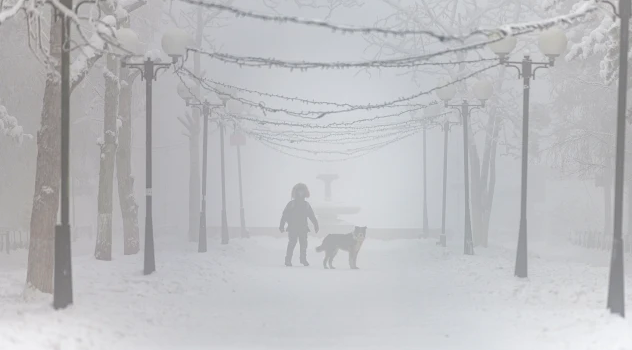Parts of Siberia have reported bone-chilling temperatures, with the region experiencing some of the coldest air on the Earth lately. In nearly eight years, “zombie fires” raged beneath the frozen landscape despite the most severe cold spell.
On Thursday, the temperature in Delyankir, Russia, dropped to an insane 78 degrees below zero Fahrenheit for the second day in a row (61.0 degrees below zero Celsius). Last winter, the temperature dropped to 73 degrees below zero Fahrenheit (58.3 degrees Celsius) on January 18.
Delyankir is in eastern Russia, roughly 300 miles (483 kilometres) north of the Sea of Oshkosh. The area is well-known for its brutal cold.

Oymyakon, located about 90 miles (145 kilometres) southwest of Delyankir, is billed as the coldest permanently inhabited site on Earth, with a record low of 90 degrees below zero F (67.8 degrees below zero C) in 1933. On Wednesday evening, local time, the temperature in Oymyakon dropped to – 74 degrees Fahrenheit (minus 58.9 C).
Due to the extreme cold, schools in Oymyakon were forced to close. According to the Siberian Times, the protocol for school cancellations in their area is that if temperatures fall below minus 63 degrees, children under the age of 11 are allowed to stay home. All classes must be cancelled if the temperature falls below minus 65 degrees.

Zombie fires occur when a previous year’s fire smoulders underground in carbon-rich peat (organic fuel) during the winter, it re-ignites on the surface the following season as the weather warms up. This can result in even more fires next year.
Emissions tend to rise as both vegetation burning and peat/permafrost burning release CO2 into the atmosphere, contributing to our planet’s warming. Local fire-resistant vegetation is also no longer fire-resistant, according to scientists.
Warmer temperatures caused by climate change are making the Arctic tundra hotter and dryer, leading to dwarf trees, grass, moss, and even surface peat behaving as fuel. As a result, even wetter areas (bogs, ferns, and marshes) are becoming more vulnerable to fire.
While temperatures in the region normally do not stay at current levels for more than a few days to a week at a time, it is unlikely that the area will experience a substantial shift to milder weather anytime soon.


